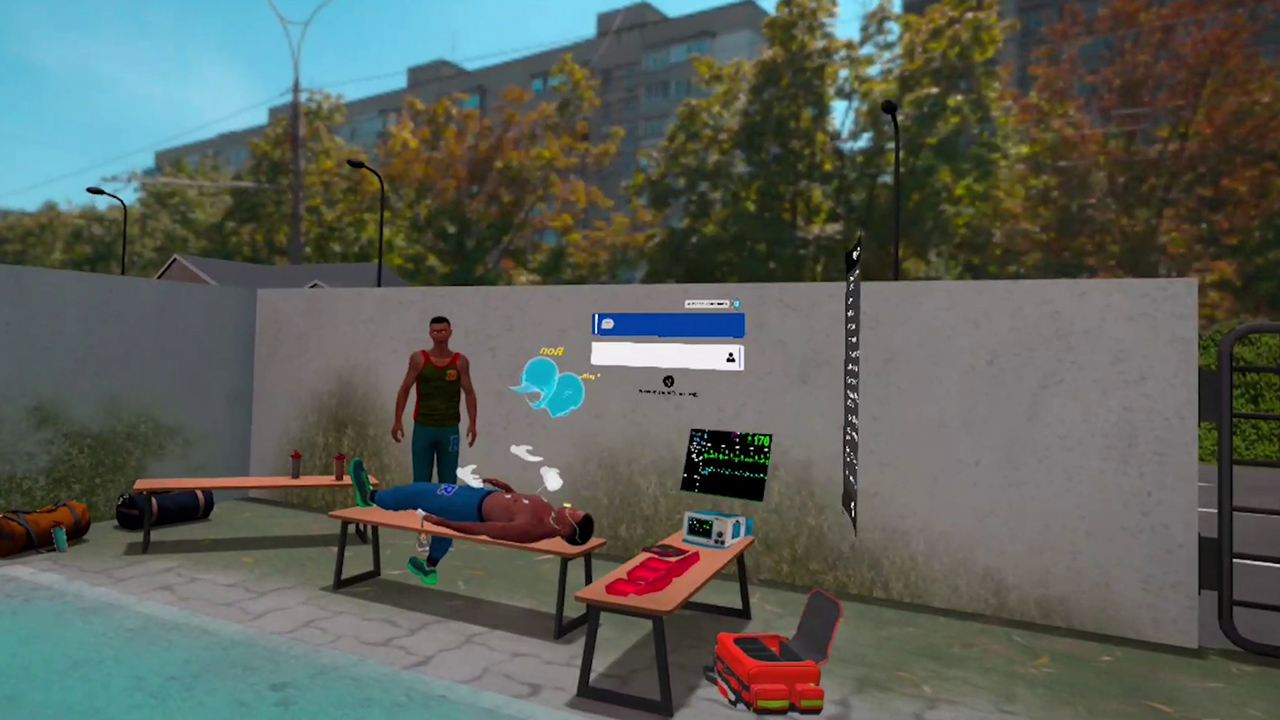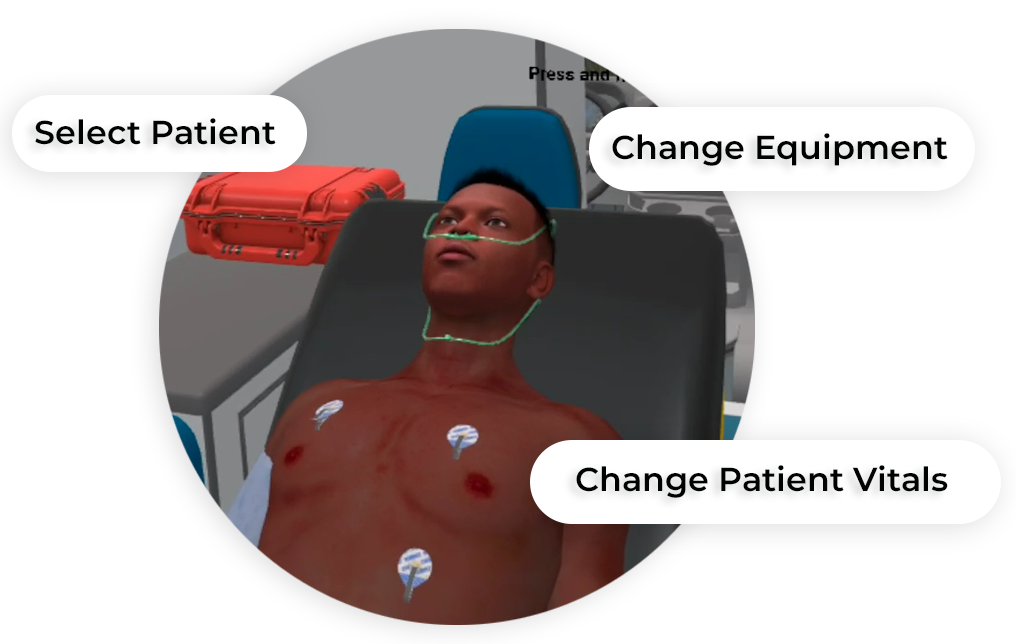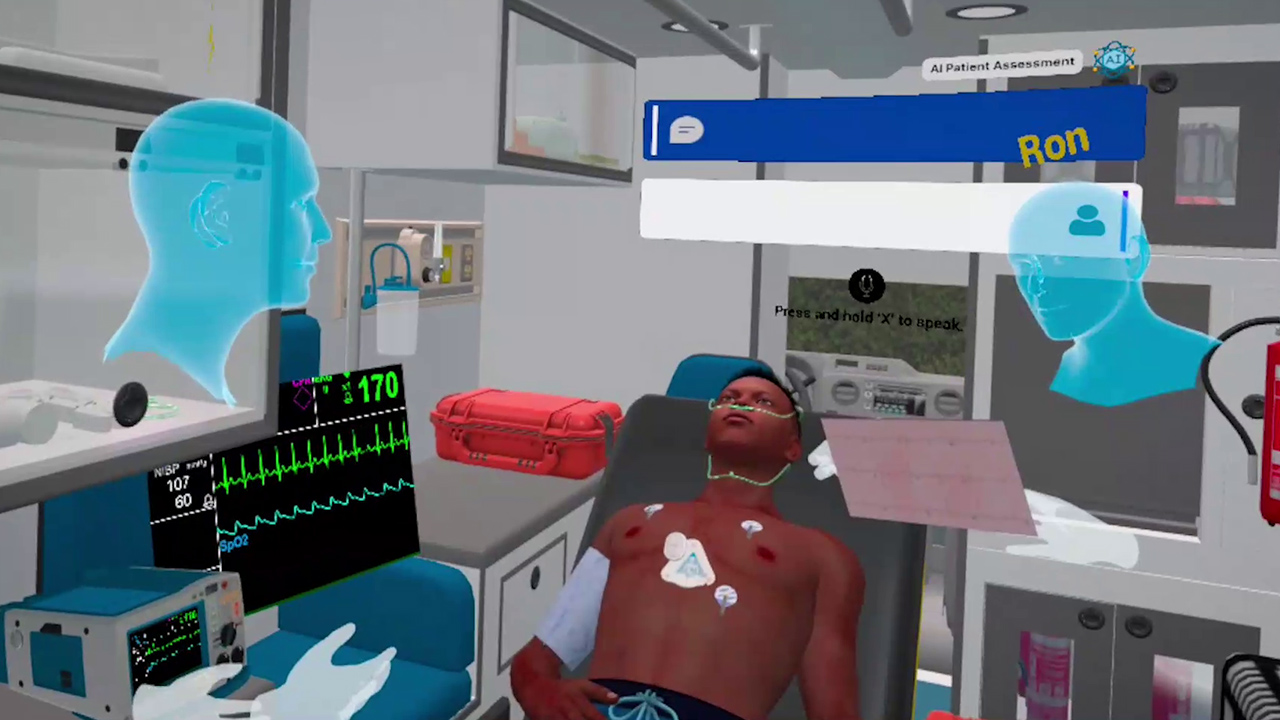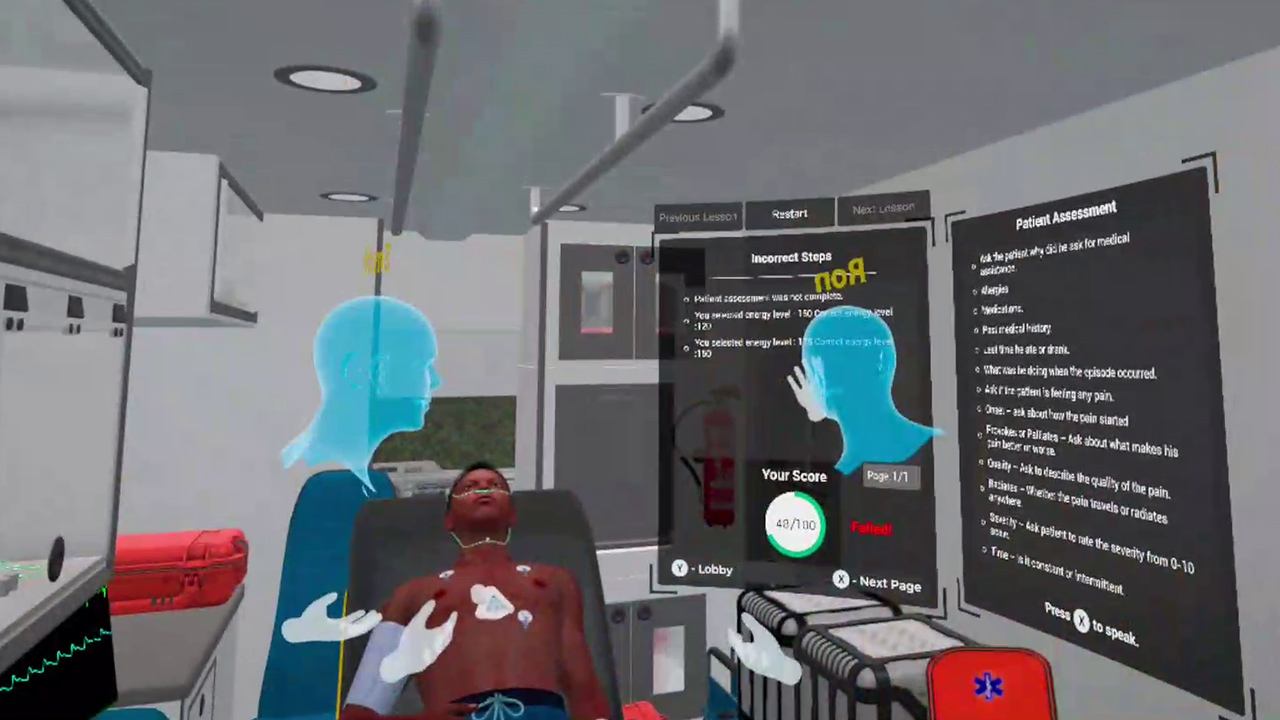Tachycardia – Paramedic
Connor is an 18 year old boy who experienced discomfort in his chest during a game of basketball and requested medical assistance. As a paramedic, you visit the location with your team to examine Connor and take necessary steps. Tending to him in the ambulance, you must assess the patient using SAMPLE and OPQRST, recognize the rhythm and institute appropriate work-up and management including electrical cardioversion.
Both single-player and multiplayer modes are available for this course. The multiplayer mode facilitates users to collaborate as a team, perform procedures with fellow participants, communicate over voice chat in real-time and share knowledge and experiences.
The open scenario helps learners perform independently without guidance and test their knowledge and skill. A debriefing is provided to help learners assess their performance.
- Interpret focused history to elicit a patient history
- Read and identify rhythm displayed on the monitor
- Administer correct interventions based on the patient condition
- Perform close-to-real conversation with virtual patient based on verbal communication enabled by natural language processing

- Panchal, A. R., Bartos, J. A., Cabañas, J. G., Donnino, M. W., Drennan, I. R., Hirsch, K. G., Kudenchuk, P. J., Kurz, M. C., Lavonas, E. J., Morley, P. T., O’Neil, B. J., Peberdy, M. A., Rittenberger, J. C., Rodriguez, A. J., Sawyer, K. N., Berg, K. M., & Adult Basic and Advanced Life Support Writing Group (2020). Part 3: Adult Basic and Advanced Life Support: 2020 American Heart Association Guidelines for Cardiopulmonary Resuscitation and Emergency Cardiovascular Care. Circulation, 142(16_suppl_2), S366–S468. https://doi.org/10.1161/ CIR.0000000000000916
Customize Your Program
Get rid of the editor. Adopt in-VR customization.
MedVR Education is bringing to you in-VR customization that will enable you to put together your own simulations by making selections from a wide range of feature choices.
- Select patient from a diverse background
- Choose preferred virtual environment
- Configure patient vitals
- Define simulation duration
- Create patient history and train with AI-Humans
- Customize session-end debriefing
- …..many more to come

 AI Patient Assessment
AI Patient Assessment Natural Language Processing
Natural Language Processing Multi-player
Multi-player
Sessions Physics-Based Interaction
Physics-Based Interaction
Core Skills Training

Tachycardia
Tachycardia refers to a condition is which the heart rate is found to be faster than normal, more that 100 beats per minute. Timely identifying the condition and providing required treatment is essential to avoid drastic circumstances. In this module, the learner is expected to examine a patient suffering chest discomfort and assess using SAMPLE and OPQRST. This scenario will focus on providing both pharmacologic and electrical conversion of the arrhythmia where participant will interview, assess, and treat a virtual patient.
Debriefing
End-of-task debriefing to assess one’s performance, evaluate actions, and get the most out of the session. The debriefing includes crucial points related to the scenario.
- Thorough patient assessment
- Completion of necessary steps
- Correct medication administration to patient
- Sequential completion of task
- Execution of time-sensitive tasks






